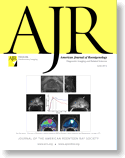MRI and ectopic liver cell transplantation - new paper

Liver cell transplantation is a promising approach for the treatment of metabolic liver disorders. However, a method for noninvasive monitoring during liver cell transplantation is not available clinically. The aim of this study was to investigate the feasibility of fast dynamic MRI monitoring during liver cell infusion to the spleen, which is considered an ectopic implantation site for liver cell transplantation. Porcine liver cells were labeled with micron-sized iron oxide particles and infused to the spleens of pigs (n = 5) via the lineal artery. MRI was performed using a 3-T MR scanner. Initially, T1- and T2-weighted pulse sequences were tested. Thereafter, fast dynamic MRI was performed during cell infusion. MR findings were verified by immunohistological examinations.
Images from static MRI (TR/TE, 2500/105.2) showed significantly lower signal intensity and signal-to-noise ratio after cell infusion compared with pretransplant images. T2-weighted fast dynamic MRI enabled visualization of signal decrease of the spleen during cell infusion. When cells were infused systemically, no signal changes in the spleen were observed. This study shows that fast dynamic MRI can enable noninvasive monitoring during liver cell transplantation to the spleen. This approach could be useful for preclinical studies and for quality control of clinical liver cell transplantation.

